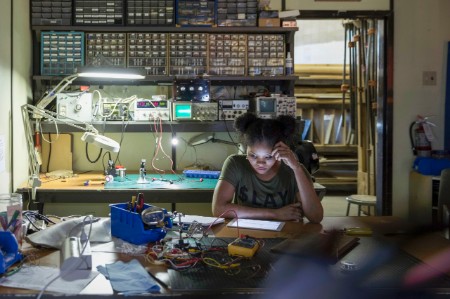Undoubtedly, the rise of AI will improve our lives in many respects, but it also presents serious risks. AI relies on algorithms which learn from real-world data so it can, inadvertently, reinforce existing social biases. Gartner predicts that by 2022, 85% of AI projects will deliver erroneous outcomes due to bias in data, algorithms or the teams responsible for managing them.
The issue is not AI, but how humans build AI. There is a very real risk that, instead of solving the problem of gender bias, AI will only exacerbate it further. Already today we see targeted ads where algorithms are perpetuating the pay gap by targeting listings for better-paid jobs toward men. Meanwhile, virtual assistants – which are subservient and unpaid – tend to be portrayed by women and many more women than men are predicted to lose their jobs to automation.
Three ways to prevent the AI worsening the gender gap
AI is likely to widen, rather than narrow, the gender gap in the future unless we take action now. A three-pronged approach that encompasses awareness, education and the inclusion of women in specific sectors is necessary.
1. Build awareness and trust in AI
It is necessary to increase general awareness and an understanding of AI to facilitate greater trust and higher adoption rates. Having broader perspectives on the diverse requirements of users and defining the challenges to tackle using AI will help shift the perception of AI. We need to bring all perspectives and disciplines to the design and development of AI. This includes those outside the science and tech-specific roles such as philosophy, problem-solving, ethics, education and law.
2. Educate and enhance skills
AI skills gender gaps may exacerbate gender gaps in economic participation and opportunity in the future as AI encompasses an increasingly in-demand skillset. According to our recent survey on the future of talent in Europe, 41% of respondents highlighted that promoting women participation in science, technology, engineering and mathematics (STEM) degrees is one of the top policy initiatives likely to have the biggest impact on the labor market. This can be achieved not only through current initiatives to attract women to the technology and STEM fields, but to also reskill women in existing jobs to work alongside AI-augmentation tools and technology.
3. Represent women fairly across different sectors
We need to be careful that women’s increasing representation within the workforce is not just limited to a few traditionally female sectors like non-profits, healthcare and education – new standards in other sectors need to be set up. The inclusion of women must be guaranteed across new fields including software, engineering and IT services as well as traditionally male-dominated areas such as finance and manufacturing. Women also need to be equipped to run responsibility roles in the public sectors. To ensure that AI is developed as inclusively as possible and for the benefits to be equally shared regardless of gender, race, ethnicity etc. top-down approaches, like setting up global standards, will need to work with bottom-up efforts.
Fixing the gender bias bug
I believe that a gender-responsive approach to innovation will help to rectify the bias that is already built into the system right now, while accelerating the inclusion of women in the working world. However, it requires thinking about how we can better leverage AI, upskill women in STEM fields and have a fair representation of women across sectors.
Women need to be builders and end users of the AI-enabled products and services of the future. By shifting the perception, and role, of women within society, we can correct the digital bugs that perpetuate existing bias and make the AI lifecycle more trustworthy. Technology can do many great things but it can not solve all our problems for us. If we are not careful, it could end up making our problems worse – by institutionalizing bias and exacerbating inequality. To prevent this from happening, organizations need to be aware of gender bias when developing and implementing AI.
Leaders need to ask themselves:
- Who are the people responsible for designing and developing AI in our organization? Do they come from a diverse range of disciplines, backgrounds and represent the diverse requirements of our stakeholders?
- How can we attract women to jobs in AI? And how can we re-skill women in our organization to use and benefit from the application of AI?
- Are we developing the right policies and frameworks to mandate gender equality in both public and private sectors, and across a broad spectrum of industries?
What’s possible in the Transformative Age? Join EY to discuss this and all the pressing economic and social issues as we look to the World Economic Forum Annual Meeting 2019 – from 22-25 January. Join the debate via ey.com/wef and using #WEF19 and #BetterWorkingWorld.


